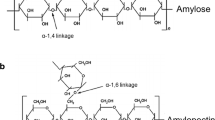Abstract
Comparative evaluation of three different methods for assessing stallion sperm-membrane integrity, including the eosin staining technique, the fluorochrome staining (SYBR-14 + PI) method, and the hypo-osmotic test, has been made in order to reveal the most efficient method of measurement for this item. The stallion sperm showed high coefficients of correlation between sperm motility and intact membrane proportion with all the methods of measurement. The best coincidence result was attained with the eosin staining technique, assessed by a correlation coefficient of 0.91. This technique has the advantages of simplicity, accessibility, and efficiency. Accurate assessment requires performing a method of subtracting a number of unstained damaged sperm cells, which are nonfunctional, from a total number of unstained spermatozoa. The proportion of motile sperm does not coincide with the proportion of sperm intact membranes during the stallion-semen storage process according to all the methods of measurement. A significant sperm count remains with intact cell membranes at the loss of total motility at the end of a storage process. This indicates that the sperm cells become immotile because of layout of the energetic material in flagellar mitochondria, which is not associated with membrane integrity. Therefore, it is recommended to assess the stallion sperm membranes with the use of fresh or thawed sperm. It is suggested to use assessment of membrane integrity in clarifying the sperm motility, particularly, in especially doubtful cases.


Similar content being viewed by others
REFERENCES
Instruktsiya po iskusstvennomu osemeneniyu i transplantatsii embrionov loshadei (Instructions for Artificial Insemination and Transplantation of Horse Embryos), Divovo: GNU VNII Konevod., 2012.
Kurbatov, A.D., Platov, E.M., Korban, N.V., Moroz, L.G., and Nauk, V.A., Kriokonservatsiya spermy sel’skokhozyaistvennykh zhivotnykh (Cryopreservation of Sperm of Farm Animals), Moscow: Agropromizdat, 1988.
Rukovodstvo VOZ po issledovaniyu i obrabotke eyakulyata cheloveka (WHO Guidelines for Investigation and Treatment of Human Ejaculate), Moscow: Kapital Print, 2012.
Shatokhina, I.S. and Kuznetsova, V.S., Issledovanie eyakulyata (Ejaculate Research), Moscow: MONIKI, 2014.
Bragina, E.E. and Abdumalikov, R.A., Rukovodstvo po spermatologii (The Guide to Spermatology), Moscow: SOREK-Poligr., 2002.
Fuse, H., Ohta, S., Sakamoto, M., Kazama, T., and Katayama, T., Hypoosmotic swelling test with a medium of distilled water, Apidologie, 1993, vol. 30, pp. 111–116.
Bahamondes, L., Fazano, F., De Lucio, M.A., Neves, P.A., Bottcher, L.F., and Lorenzetti, G.B., Evaluation of human sperm membrane integrity using the water test and the hypoosmotic test, Andrologia, 2001, vol. 33, pp. 75–77.
Nur, Z., Seven-Cakmak, S., Ustuner, B., and Cakmak, I., The use of the hypo-osmotic swelling test, water test, and supravital staining in the evaluation of drone sperm, Apidologie, 2012, vol. 43, pp. 31–38.
Kudryavtsev, I.V., Golovkin, A.S., Zurochka, A.V., and Khaidukov, S.V., Modern methods and approaches to the study of apoptosis in experimental biology, Med. Immunol., 2012, vol. 14, no. 6, pp. 461–482.
Ploskonos, M.V., Methods for determining sperm apoptosis (literature review), Klin. Lab. Diagn., 2013, no. 4, pp. 3–8.
Gamer, D.L., Johnson, L.A., Yue, S.T., Roth, B.L., and Haugland, R.P., Dual DNA staining assessment of bovine sperm viability using SYBR-14 and propidium iodide, J. Androl., 1994, no. 16, pp. 620–629.
Garner, D.L. and Johnson, L.A., Viability assessment of mammalian sperm using SYBR-14 and propidium iodide, Biol. Reprod., 1995, no. 53, pp. 276–284.
Atroshchenko, M.M., Safronova, O.S., and Chekoi, N.A., Determination of the sperm viability of stallions, Konevod. Konnyi Sport, 2010, no. 6, pp. 13–15.
Evdokimov, V.V., Kharlamova, L.A., Aibyatov, D.T., and Turovetskii, V.B., Comparison of methods and conditions for qualitative assessment of human sperm, Probl. Reprod., 2012, no. 3, pp. 68–71.
Evdokimov, V.V., Kharlamova, L.A., Aibyatov, D.T., Erokhin, A.S., and Turovetskii, V.B., The use of flow cytometry to assess the viability of human spermatozoa, Eksp. Klin. Urol., 2012, no. 3, pp. 48–50.
Ploskonos, M.V., The use of eosin and propidium iodide to assess the viability of human sperm, Klin. Lab. Diagn., 2014, no. 11, pp. 22–24.
Chalah, T. and Brillard, J.P., Comparison of assessment of fowl sperm viability by eosin-nigrosyn and dual fluorescence (SYBR-14), Theriogenology, 1998, no. 50, pp. 487–493.
Author information
Authors and Affiliations
Corresponding authors
Ethics declarations
Conflict of interest. The authors declare that they have no conflict of interest.
Statement of the welfare of animals. All applicable international, national, and/or institutional guidelines for the care and use of animals were followed.
Additional information
Translated by O. Zhiryakova
About this article
Cite this article
Naumenkova, V.A., Atroshchenko, M.M., Gulov, A.N. et al. Comparative Evaluation of Different Methods for Assessing Stallion Sperm Membrane Integrity. Russ. Agricult. Sci. 46, 381–384 (2020). https://doi.org/10.3103/S1068367420040126
Received:
Revised:
Accepted:
Published:
Issue Date:
DOI: https://doi.org/10.3103/S1068367420040126




